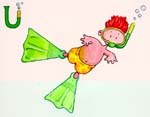
NPS WANT TO SNORKEL? 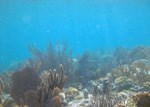
Susanna Pershern WHAT'S A CORAL REEF? 
NOAA's Florida Keys NMS GUESSING GAME The game starts by one person being the starter. He (or she!) thinks of some thing, like "dog," but keeps the thing secret. Now it's the job of the other people to take turns asking questions to the starter person that he can answer by saying only "yes" or "no" to the question. The first person to ask a question usually starts with, “Is the word you're thinking about an animal, a vegetable or a mineral?”-- meaning: is the word an animal, a plant or is it non-living, like a rock? After that, other people take turns asking questions to narrow down what the thing could be. The first person to guess the thing correctly in 20 questions or less wins! The picture shows living elkhorn coral. Soooooooo, what's a coral? 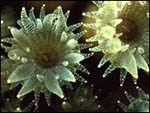
NASA WHAT'S A CORAL? ANIMAL 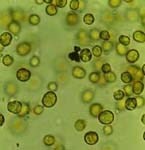
NOAA A coral polyp is also sort of a plant. How would you like to have lunch by going outdoors and standing in the sun for half an hour while spinach in your skin photosynthesized to make food for you?! That’s what corals do; they have tiny plant cells (called zooxanthellae…zo-zan-thel-ee) living in their skin that make food for the coral. But zooxanthellae don’t look anything like spinach; each one is just a single cell; so gazillions of them live inside almost every coral cell, giving coral its color. And some zooxanthellae can make 90% of the food a coral needs; wow! 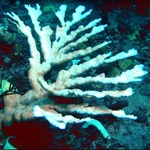
NOAA Center for Coastal Monitoring & Assessment MINERAL AMAZING CORAL 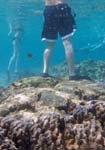
NOAA, courtesy of Ziggy Livnat LET'S GO! SOS means "Stand On Sand." What's the person doing wrong in this picture? If you do at least one of these two snorkel trips, you can print yourself a Virgin Islands National Park SOS Snorkeler Certificate, and show it to the Ranger at our Visitor Center when you visit our Park! Online Snorkel Trip: Corals, Sponges and Creepy Crawlies |
Last updated: March 23, 2020
